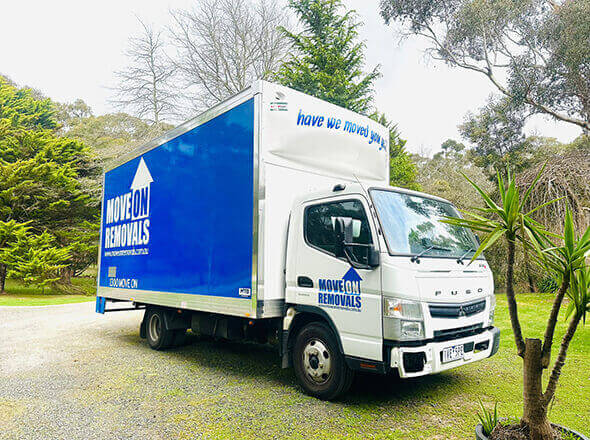Moving your office marks a big moment in your business journey. It could be the exciting beginning of a new chapter of smooth commercial office move or a crucial move to streamline operations. Whatever the reason for your relocation, having a clear plan and the right support is key.
Remember, commercial moving has its nuances, and Move On Removals is here to guide you through the unique considerations for an office environment. And during your commercial or office relocation, when it comes to your electronic assets and precious data, we understand the importance of keeping them safe during the move.
With our helpful guide, we’ll take you step by step through the ins and outs of commercial office relocations, ensuring a smooth transition.
What Exactly is Commercial Moving?
Commercial moving, or office relocation, is the process of transferring a company’s physical assets from one location to another. This transition could involve moving into a larger office space, consolidating multiple office locations, or simply finding a different area to accommodate a shifting customer base.
There are various types of commercial moves, each with its unique demands, from corporate offices with numerous workstations to specialized facilities like laboratories and data centers. Each of these moves requires specialized techniques and considerations to ensure a smooth transition.
Difference b/w Commercial & Residential Moving
Residential moving is usually more straightforward as it involves relocating personal belongings. Commercial moving, on the other hand, is typically more involved due to the larger quantity of items, the presence of bulky or specialized equipment, and the need to maintain business operations throughout the process where possible.
Types of Commercial Moves
Office Moves
An office move is when a company relocates from one office space to another. This could involve transferring employees and office furniture, but also encompasses more complex tasks such as disassembling and reassembling workstations, moving IT infrastructure, and ensuring minimal disruption to business activities.
Warehouse Moves
A warehouse move involves transporting inventory, equipment, and shelving in a way that minimizes damage and keeps items organized for easy retrieval. This type of move often requires a strategic logistical plan to ensure that stock can be delivered and managed efficiently after the move.
Laboratory Moves
Moving a laboratory is one of the most intricate types of commercial moves. Laboratories often contain delicate and expensive equipment, hazardous materials, and intricate setups that must be replicated precisely at the new location to maintain the integrity of ongoing research and testing.
How Much Do Commercial Movers Cost?
Commercial moving costs can vary significantly, depending on various factors such as the size of your office, the quantity of equipment, and the distance of the move. It’s essential to get a comprehensive quote that includes all potential costs before committing to a moving company.
The cost of a commercial move can be broken down into several categories, including:
- Packing and unpacking services
- Loading and unloading
- Transport and insurance
- Equipment and technology setup
- Temporary storage if needed
Remember, while cost is important, it should not be the sole factor in your decision-making process. The reliability and experience of the moving company are equally important for a successful move.
Advantages of Using Commercial Movers for Your Move
Moving your office is a big task, but with help from professional commercial movers, you can make the process much easier. Here are some great reasons to choose commercial movers instead of managing the move on your own:
1. Expertise and Experience
Commercial moving companies are experts at managing office relocations, with the know-how and experience to handle the ins and outs of these tasks. From delicate office equipment to intricate tech setups, these pros excel at safely and efficiently moving all your assets.
2. Access to Necessary Resources
One great perk of hiring commercial movers is having access to a wide range of resources crucial for a smooth move. You’ll get top-notch packing materials to keep your stuff safe, dependable transportation services for the transfer, and even temporary storage options if required. With these resources, you can make sure every detail of your move is well thought out and smoothly carried out.
3. Minimized Disruption
Commercial movers get how crucial it is to reduce disruptions to your business during relocation. They provide flexible moving options like after-hours and weekend moves to suit your schedule. Your team can keep working smoothly with minimal interruption, keeping productivity up during the transition.
4. Structured Moving Plan
A professional moving service will collaborate closely with you to create a personalized moving plan that fits your unique needs and circumstances. This detailed plan covers everything from packing and transportation to unpacking and setup, guaranteeing a seamless and organized transition from beginning to end.
5. Focus on Business Operations
By letting a commercial moving service handle your office relocation, you’ll have more time and resources to keep your business running smoothly. Rest assured your move is in good hands, so you can focus on preparing your team and ensuring your business thrives during the transition.
Things to Consider During the Office Moving Process
Commercial moves require careful planning and attention to detail. Here are some essential considerations to keep in mind as you prepare for your office relocation:
Planning
Start planning your move as far in advance as possible. Create a detailed moving calendar that includes key milestones and deadlines. Assign roles and responsibilities to ensure all aspects of the move are accounted for.
Setting Criteria
Make a list of must-haves for your future office space, including location, size, parking, access to public transport, and any legal or industry-specific requirements. Having a clear set of criteria will help you narrow down your search.
Timing
Consider the best time to move for your business. You may want to coincide your move with a quieter period to minimize disruption, or you might choose a strategic time to re-launch or rebrand.
Have a Deadline
Setting a move-out deadline is crucial, especially if your new location has a move-in date. This ensures that all the moving components are aligned and that the transition happens as seamlessly as possible.
Things to Consider After the Move
Congratulations on completing your office relocation! While the move itself marks a significant milestone, there are several important considerations to address in the aftermath to ensure a smooth transition and continued success. Here are some key things to consider:
1. Unpacking and Setup
Allocate time and resources to unpacking and setting up your new office space. Prioritize essential items and equipment to minimize disruption to your business operations. Consider enlisting the help of your team or professional movers to expedite the process efficiently.
2. IT Infrastructure and Technology
Ensure that your IT infrastructure and technology systems are up and running smoothly in your new office space. Test network connectivity, phone lines, and any specialized equipment to address any issues promptly. Collaborate with your IT team or service provider to troubleshoot and optimize your technology setup.
3. Employee Orientation and Training
Familiarize your employees with the layout and amenities of the new office space. Provide orientation sessions to acquaint them with any changes in procedures or protocols. Offer training as needed to ensure they can effectively navigate and utilize the new environment and resources.
4. Client and Vendor Communication
Communicate your office relocation to clients, vendors, and other relevant stakeholders. Update contact information, including your address, phone numbers, and email addresses, to ensure seamless communication. Consider sending out announcements or newsletters to inform stakeholders of the move and any changes to business operations.
5. Feedback and Evaluation
Gather feedback from your team members and stakeholders regarding the office relocation process. Assess what went well and identify areas for improvement to inform future moves or organizational changes. Use this feedback to refine your relocation strategy and enhance the overall experience for everyone involved.
6. Celebrate and Build Morale
Take the time to celebrate your successful office relocation with your team. Organize a gathering or special event to commemorate the achievement and boost morale. Recognize the hard work and contributions of your employees throughout the relocation process, reinforcing a sense of camaraderie and teamwork.
FAQ,s of Smooth Commercial Office Move
Moving an office is a complex task that raises many questions. Here are some frequently asked questions about office moves:
How to Minimize Moving Stress When Relocating Your Office?
Reducing moving stress is key! Start with thorough planning and a good communication strategy with everyone involved. Spot stress points early and come up with ways to handle them.
What Is the Difference Between Commercial and Domestic Moving?
The key contrast between commercial and domestic moving lies in the scale and complexity. Commercial moves usually entail bigger spaces, more equipment, and additional logistical planning.
How Do You Announce an Office Move?
Let your team and clients know about the office move in advance so they can plan accordingly. Use various channels like email, social media, and physical notices in the office to spread the word.
What Is the Best Time to Move an Office?
The best time to move your office can differ based on your company’s specific needs and industry. However, lots of businesses find that moving midweek causes less disruption to daily operations, and choosing off-peak months can help save on commercial moving expenses.
Conclusion of Smooth Commercial Office Move
A commercial office move might seem like a big task, but with some thoughtful planning and the right support, it can actually be a chance for growth and improved efficiency. By really getting what a commercial move needs and handling each part with care, you can make sure the shift goes smoothly and sets you up for even more success. Don’t forget to team up with seasoned pros, keep your crew in the loop, and see the move as a way to make your business even better!


